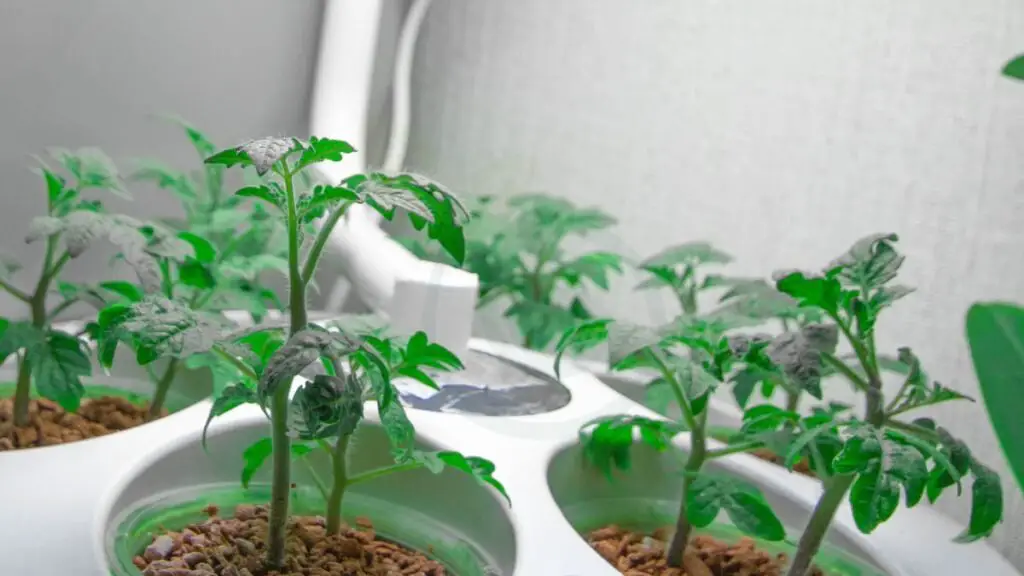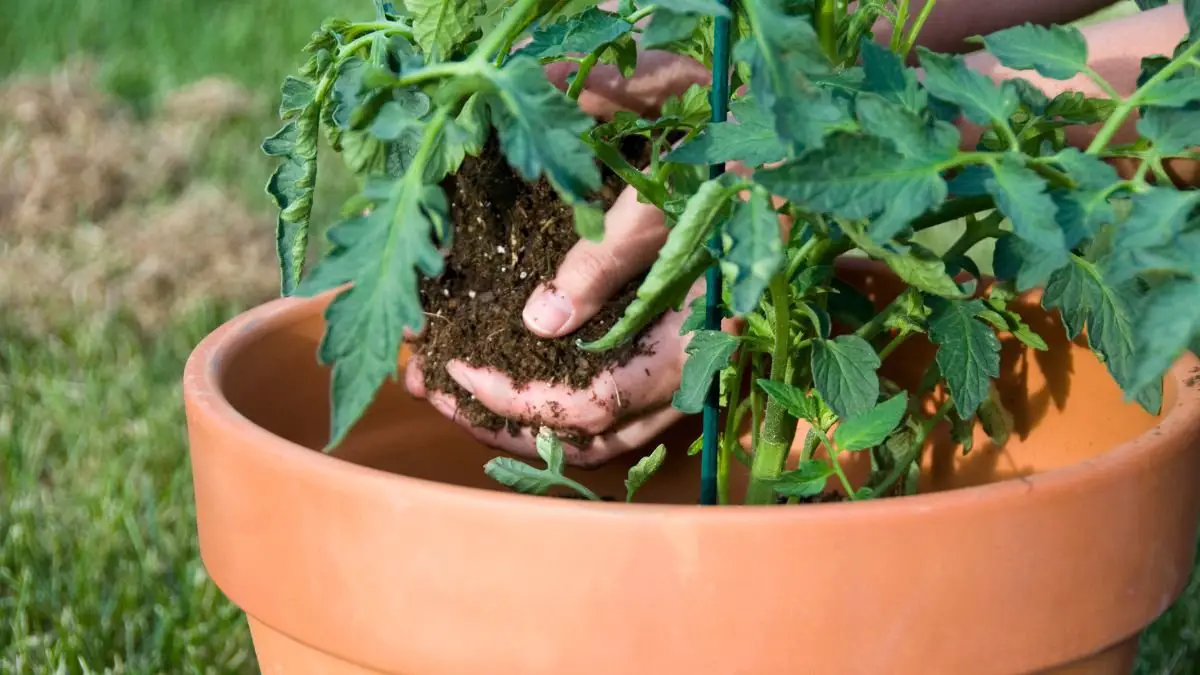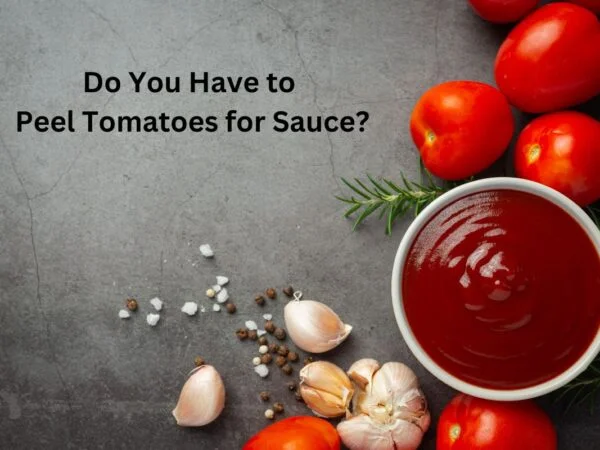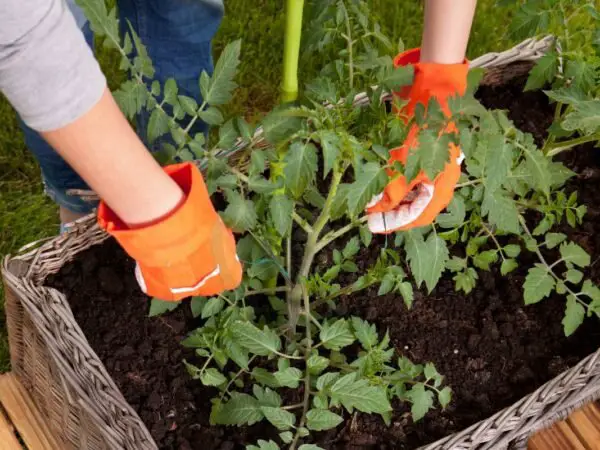Looking to boost your potted tomato plants' growth? Wondering what the best fertilizer for them is? Imagine having vibrant, healthy tomatoes right at your fingertips. Which fertilizer will help you achieve this lush garden dream?
Key Takeaways
- Choose the Right Fertilizer: Select a balanced fertilizer with equal parts of nitrogen, phosphorus, and potassium for optimal growth.
- Utilize Liquid Fertilizers: Liquid fertilizers offer quick nutrient absorption for potted tomato plants, promoting healthy development.
- Avoid Over-Fertilization: Over-fertilizing can harm your tomato plants; follow recommended dosages on package directions to prevent nutrient imbalances.
- Match Fertilization to Tomato Varieties: Different tomato varieties have specific nutrient needs, so tailor your fertilizer choice accordingly.
- Apply Fertilizer Strategically: Apply fertilizer near the root zone of the plant and water thoroughly to ensure proper distribution.
- Learn from Common Mistakes: Be mindful of common mistakes like inconsistent fertilization schedules or using the wrong type of fertilizer to maintain healthy potted tomatoes.
Understanding Fertilizers for Potted Tomatoes
Types of Fertilizers
Organic fertilizers are derived from natural sources like compost or manure, promoting soil health and microbial activity. Synthetic fertilizers, on the other hand, are chemically manufactured, offering precise nutrient content for plants.
Slow-release fertilizers provide a steady supply of nutrients over an extended period, ideal for sustained growth in potted tomato plants. Water-soluble fertilizers dissolve quickly in water, ensuring rapid absorption by the plant roots.
Application Frequency
For potted tomato plants, it's crucial to fertilize every 2-3 weeks during the growing season to maintain optimal growth and fruit production. Under-fertilization can lead to stunted growth, pale leaves, and poor fruit development.
To prevent nutrient imbalances and potential damage to plants, avoid over-fertilization by using recommended dosage instructions provided on the fertilizer packaging.
Importance of NPK Ratio
The NPK ratio on fertilizer labels represents the percentage of nitrogen (N), phosphorus (P), and potassium (K) in the product. Nitrogen supports leafy green growth, phosphorus aids in root development and flower/fruit production, while potassium enhances overall plant health.
When selecting a fertilizer for potted tomatoes, opt for a balanced NPK ratio such as 10-10-10 or 5-10-10 to ensure adequate nutrition without causing nutrient deficiencies or excesses.
Choosing the Right Fertilizer
Liquid vs Granular
When deciding between liquid and granular fertilizers for potted tomato plants, consider the ease of application. Liquid fertilizers are convenient to apply directly to the soil, whereas granular options require mixing into the soil. In terms of nutrient retention, liquid fertilizers are quicker to absorb, providing immediate benefits.
On the other hand, granular fertilizers offer a slow-release mechanism, ensuring a steady supply of nutrients over time. For container tomatoes that need consistent feeding, granular fertilizers can be beneficial due to their longer-lasting effects.
Organic Options
Exploring organic fertilizer choices such as fish emulsion and kelp meal can enhance the overall health of potted tomato plants. Organic fertilizers contribute to long-term soil health by promoting microbial activity and improving soil structure. The use of organic fertilizers also helps in reducing environmental impact by avoiding harmful chemicals that may leach into the surroundings.
Considering the environmental impact is crucial when opting for organic fertilizers. While they may take longer to show results compared to synthetic options, organic fertilizers provide sustainable nourishment for both the plants and the soil, fostering a healthy ecosystem within your containers.
Synthetic Solutions
Understanding the effectiveness of synthetic fertilizers in promoting tomato plant growth is essential for optimal results. Synthetic fertilizers offer a quick nutrient boost to support immediate plant needs, aiding in rapid growth and development. The convenience of synthetic fertilizers lies in their ability to provide specific nutrients tailored to address deficiencies promptly.
However, it's important to weigh the potential drawbacks of using synthetic fertilizers in containers. Overuse of synthetic options can lead to nutrient imbalances and harm beneficial soil organisms over time. Regular monitoring and proper dosage are key factors when utilizing synthetic fertilizers for potted tomato plants.
Benefits of Liquid Fertilizers
Quick Absorption
Opt for fertilizers with quick absorption rates to provide immediate benefits to your potted tomato plants. These fertilizers work swiftly, ensuring that the plants receive essential nutrients promptly. Quick-absorbing fertilizers can effectively address any nutrient deficiencies, promoting healthier and more robust plant growth. Consider how this rapid absorption can positively impact both the overall health of the plant and its fruit production.
- Pros:
- Immediate nutrient delivery
- Rapid response to deficiencies
- Cons:
- Potential risk of over-fertilization
Understanding the significance of quick absorption in fertilizers is crucial for maintaining the vitality of your potted tomato plants. By choosing products that facilitate swift nutrient uptake, you can ensure that your plants thrive and produce abundant, high-quality fruits.
Easy Application
When selecting fertilizers for your potted tomato plants, prioritize those that offer easy application methods. Look for products that are water-soluble and easy to apply, simplifying the fertilization process. Consider factors like application frequency and compatibility with different watering routines to ensure a hassle-free experience. Liquid fertilizers are excellent options as they are convenient to use and provide efficient nutrient delivery.
- Consider using a measuring cup or dispenser for accurate application.
- Dilute liquid fertilizers according to the manufacturer's instructions.
- Apply the fertilizer evenly around the base of each plant to promote uniform nutrient distribution.
Liquid fertilizers stand out for their ease of use, making them ideal choices for busy gardeners looking to nourish their potted tomato plants effectively.
Balanced Nutrition
To promote optimal growth and development in your potted tomato plants, it is essential to provide them with a well-rounded nutrient profile through balanced nutrition. Ensure that your chosen fertilizer contains a mix of essential nutrients such as nitrogen, phosphorus, and potassium in appropriate ratios. By offering balanced nutrition, you can prevent nutrient deficiencies that may hinder plant growth and fruit production. Maintaining a consistent supply of essential nutrients contributes significantly to the overall health and productivity of your plants.
- Key Nutrients:
- Nitrogen (N)
- Phosphorus (P)
- Potassium (K)
Avoiding Over-Fertilization

Signs of Excess
Potted tomato plants show visible signs of nutrient excess, such as leaf burn or discoloration. Monitor for stunted growth or wilting, indicating potential over-fertilization in container tomatoes. Preventive measures include using a balanced fertilizer and following recommended application guidelines.
Correcting Overuse
To address over-fertilization, adjust the fertilizer dosage based on plant needs and nutrient levels. Consider diluting the soil by flushing it with water to remove excess nutrients effectively. Restoring nutrient balance is crucial to prevent further damage to potted tomato plants.
Monitoring Plant Health
Regularly check the overall health of your container tomatoes to catch any issues early on. Changes in leaf color, size, or fruit quality can signal underlying nutrient problems. Promptly addressing any concerns ensures optimal growth and a bountiful harvest.
Tomato Varieties for Containers
Bush Early Girl
Bush Early Girl tomato variety is known for its early maturity, making it ideal for shorter growing seasons. The compact size of the plant suits container gardening well. With proper care, it produces flavorful tomatoes with a good yield. Supporting these plants with stakes or cages helps maintain their upright growth in containers.
Patio Princess
The Patio Princess tomato offers a delightful flavor profile, perfect for fresh eating or salads. When grown in containers, this variety can yield a generous amount of tomatoes throughout the season. Providing adequate support to Patio Princess tomatoes ensures they grow upright and healthy, maximizing their productivity. These plants thrive in sunny locations with well-draining soil.
Window Box Roma
Window Box Roma tomatoes are renowned for their high yield and excellent paste texture, making them ideal for sauces and canning. Growing these tomatoes in a 14" container allows for sufficient root space to support their prolific fruit production. Regular watering and feeding are essential to nurture healthy Window Box Roma plants in containers.
Super Bush Hybrid
The Super Bush Hybrid tomato stands out for its compact size and robust growth habits, making it perfect for container cultivation. This variety offers a unique blend of characteristics from different parent plants, resulting in exceptional taste and texture. Supporting Super Bush Hybrid tomatoes in containers promotes better airflow and prevents overcrowding, leading to improved yields.
Fertilizing Specific Tomato Varieties
Bushsteak Care
Bushsteak tomatoes thrive in containers with proper care. Understand their support needs for optimal growth. Consider the taste, size, and yield potential of Bushsteak tomatoes.
Supporting Bushsteak tomatoes involves regular watering to maintain soil moisture levels. Provide well-draining soil to prevent waterlogging, promoting healthy root development. Bushsteak plants require full sun exposure for at least six hours daily.
The growth habit of Bushsteak tomatoes is determinate, meaning they grow to a specific height and set fruit within a defined period. This characteristic makes them ideal for container gardening due to their compact size. Pruning is essential to encourage air circulation and prevent diseases.
Bushsteak tomatoes are known for their rich, sweet flavor and medium-sized fruits. They typically produce high yields of tomatoes that are perfect for fresh consumption or culinary use. With proper care, Bushsteak plants can provide a bountiful harvest throughout the growing season.
Tumbler Nourishment
Tumbler Tomatoes in containers require adequate nutrition to thrive. Understand the benefits of providing nutrients for Tumbler Tomato plants. Consider the specific feeding schedule and fertilization needs for Tumbler Tomatoes.
Tumbler Tomatoes benefit from a balanced fertilizer that includes essential nutrients like nitrogen, phosphorus, and potassium. Regular feeding promotes healthy growth and abundant fruit production in these cascading tomato plants grown in hanging baskets or containers.
Providing proper nourishment ensures that Tumbler Tomatoes develop strong roots and vibrant foliage, leading to increased flower formation and fruit setting. A consistent fertilization schedule throughout the growing season supports continuous growth and prevents nutrient deficiencies.
When fertilizing Tumbler Tomatoes, consider using a slow-release fertilizer or organic options to sustain plant health over an extended period. Avoid over-fertilizing, as it can lead to nutrient imbalances or burn the plant roots. Adjust feeding frequency based on plant response and overall growth performance.
Application Tips and Tricks
Best Time to Fertilize
Determining the best time to fertilize potted tomato plants is crucial for their optimal growth. Consider the plant's growth stages – such as seedling, flowering, and fruiting – when deciding on fertilization timing. Take into account seasonal changes like temperature variations and daylight hours.
Plan your fertilization schedules strategically to ensure that the plants receive nutrients when they need them the most. For example, during the initial growth phase, focus on nitrogen-rich fertilizers to promote leafy growth. As the plants start setting fruits, switch to a phosphorus-heavy fertilizer for better fruit development.
Dilution Ratios
Understanding the significance of following dilution ratios is essential for effectively nourishing potted tomato plants. Dilution ratios determine the concentration of nutrients in the fertilizer solution applied to the soil. By adhering to recommended dilution guidelines, you can prevent over-fertilization, which can harm plant roots.
Proper dilution ensures that nutrients are available in balanced proportions, promoting healthy plant growth. Incorrect dilution can lead to nutrient deficiencies or toxic buildup in the soil, negatively impacting plant health and productivity. Always refer to the package directions provided by the fertilizer manufacturer for accurate dilution instructions.
- Follow package directions precisely
- Prevent over-fertilization risks
- Ensure balanced nutrient availability
Frequency Adjustments
Adjusting fertilizer application frequency based on plant requirements is crucial for sustaining optimal growth. As plants grow and develop, their nutrient needs change; therefore, adapt your fertilization schedule accordingly. Environmental factors like temperature fluctuations and sunlight exposure also influence nutrient uptake rates.
Monitor your potted tomato plants' response to fertilizer applications closely. Observing any signs of nutrient deficiencies or excesses will guide you in adjusting the frequency of fertilization appropriately. Regularly check your plants for symptoms like yellowing leaves or stunted growth, indicating potential nutrient imbalances.
- Modify frequency based on plant growth
- Consider environmental influences
- Monitor plant response for adjustments
Common Mistakes to Avoid
Ignoring Soil Test Results
l test results are crucial for understanding nutrient deficiencies and pH levels in potted tomato plants. Tailor fertilization based on these insights to optimize plant health and growth.
Overlooking Plant Stages
Consider the growth stages of your container tomatoes when fertilizing. Adjust nutrient levels accordingly to support healthy development and maximize fruit production.
Neglecting Container Size
Container size plays a vital role in nutrient availability for potted tomato plants. Choose containers that support root development and ensure adequate nutrient uptake for optimal growth.
Additional Care for Potted Tomatoes
Watering Needs
Potted tomato plants' watering requirements are crucial for proper growth and fruit development. Adjust watering to complement fertilizer use and prevent nutrient loss. Factors like soil moisture and drainage impact watering needs significantly.
Sunlight Requirements
Adequate sunlight exposure is essential for potted tomatoes to thrive. Position containers in sunlit areas to optimize growth and nutrient absorption. Sunlight influences plant metabolism, directly impacting fruit production and overall plant health.
Pruning and Support
Implement pruning techniques in container tomatoes to enhance airflow and reduce disease risks. Supporting structures like trellises help maintain plant structure, prevent sprawling, and aid in fruit development. Pruning and support play a vital role in ensuring the health of potted tomato plants.
Summary
Understanding the best fertilizer for potted tomato plants is essential for their growth and productivity. By choosing the right fertilizer and applying it correctly, you can benefit from healthier plants, increased yields, and vibrant tomatoes. Liquid fertilizers offer a convenient and efficient way to nourish your potted tomatoes while avoiding over-fertilization pitfalls. Remember to select suitable tomato varieties for containers, follow specific fertilizing guidelines, and employ helpful application tips for optimal results. Steer clear of common mistakes that could hinder your plants' development, and provide extra care to ensure thriving potted tomatoes.
Enhance your potted tomato gardening experience by implementing these fertilizer strategies. Your tomatoes will thank you with bountiful harvests and robust growth. Share your newfound knowledge with other gardening enthusiasts to spread the joy of successful potted tomato cultivation.
Frequently Asked Questions
What are the key factors to consider when choosing fertilizer for potted tomato plants?
When selecting a fertilizer for potted tomatoes, consider:
- Nutrient content (N-P-K ratio)
- Organic vs. synthetic
- Slow-release vs. liquid
- pH levels compatibility
- Micro-nutrients presence
- Water-solubility for easy absorption
How often should I fertilize my potted tomato plants?
Fertilize your potted tomato plants every 2-3 weeks during the growing season, starting after the first few weeks of transplanting. Adjust frequency based on plant growth and any signs of nutrient deficiency.
Can I use regular garden fertilizer for my potted tomato plants?
While regular garden fertilizers can be used, it's best to opt for a balanced fertilizer specifically formulated for container plants. Regular fertilizers may not provide the ideal nutrient balance needed by potted tomatoes.
Is over-fertilization harmful to potted tomato plants?
Yes, over-fertilization can lead to nutrient imbalances, root burn, stunted growth, or even plant death. Always follow recommended dosage instructions and avoid excessive application of fertilizers to prevent harm to your potted tomato plants.
Are there specific tips for applying fertilizer to potted tomato plants effectively?
To apply fertilizer effectively:
- Water the plant before fertilizing.
- Use a watering can with a fine rose attachment.
- Apply near the root zone without touching stems.
- Follow recommended dosage.
- Avoid getting fertilizer on leaves to prevent burning.
Should I consider different fertilization strategies for various tomato varieties in containers?
Yes, different tomato varieties have varying nutrient requirements. Some may need more potassium for fruit development, while others require higher nitrogen levels for foliage growth. Tailor your fertilization approach based on the specific needs of each tomato variety you are growing in containers.
Image Source: Paid image from CANVA




